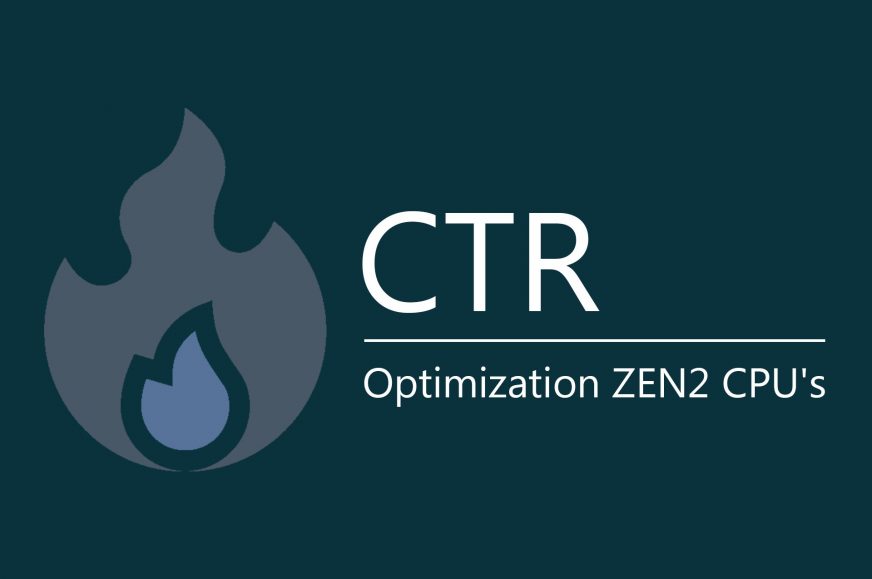The new version of the advanced tool for automatic overclocking of AMD processors brings big changes
ClockTuner for Ryzen, an app which automatically finds safe voltages and overclocks for Ryzen processors to improve performance, is now getting a new version. It is completely redesigned and introduces support for the new Ryzen 5000 “Vermeer” processors with Zen 3 architecture as well as Ryzen 4000G APUs. The main new feature is a completely new method of OC that maximizes both ST and MT performance, something not possible before.
There is a lot of new stuff in ClockTuner for Ryzen 2.0. Amongst the smaller additions, there’ for example a new CPU monitoring feature, which acordign to the author shows a very accurate value of the current CPU voltage (“CPU Tel (V)”), taken straight from its telemetry data.
CTR Hybrid OC: the best of both worlds
The biggest novelty, however, is the addition of hybrid overclocking via the so-called CTR Hybrid OC feature. The goal of this mode is to maximize performance in all circumstances. If you’ve ever overclocked Ryzen, you probably know that the easiest and safest method is to use Precision Boost Overdrive. That way keeps the original automatic boost active, you simply increase the current, power draw and optionally also clock limits to get the usual turbo boost reach higher clock. Because the boost is still active, you’re maintaining the maximum possible single-threaded performance that the stock CPU offered. The downside is that the obtained multi-threaded performance is usually not as high as it could possibly be if you went for more “hardcore” old-school overclocking, i.e. find the highest possible clock speed & voltage that keeps stability with all cores active, and fix the clock (and voltage) to that value. This will provide higher multi-threaded performance, but you are going to be stuck to this frequency, which is several hundred MHz lower than the maximum single-core boost, even in single-core loads. Meaning, you’ll get worse results in single-threaded applications. So there has always been a conundrum: do you prefer multithread performance and are willing to sacrifice single-thread? Or the other way around?
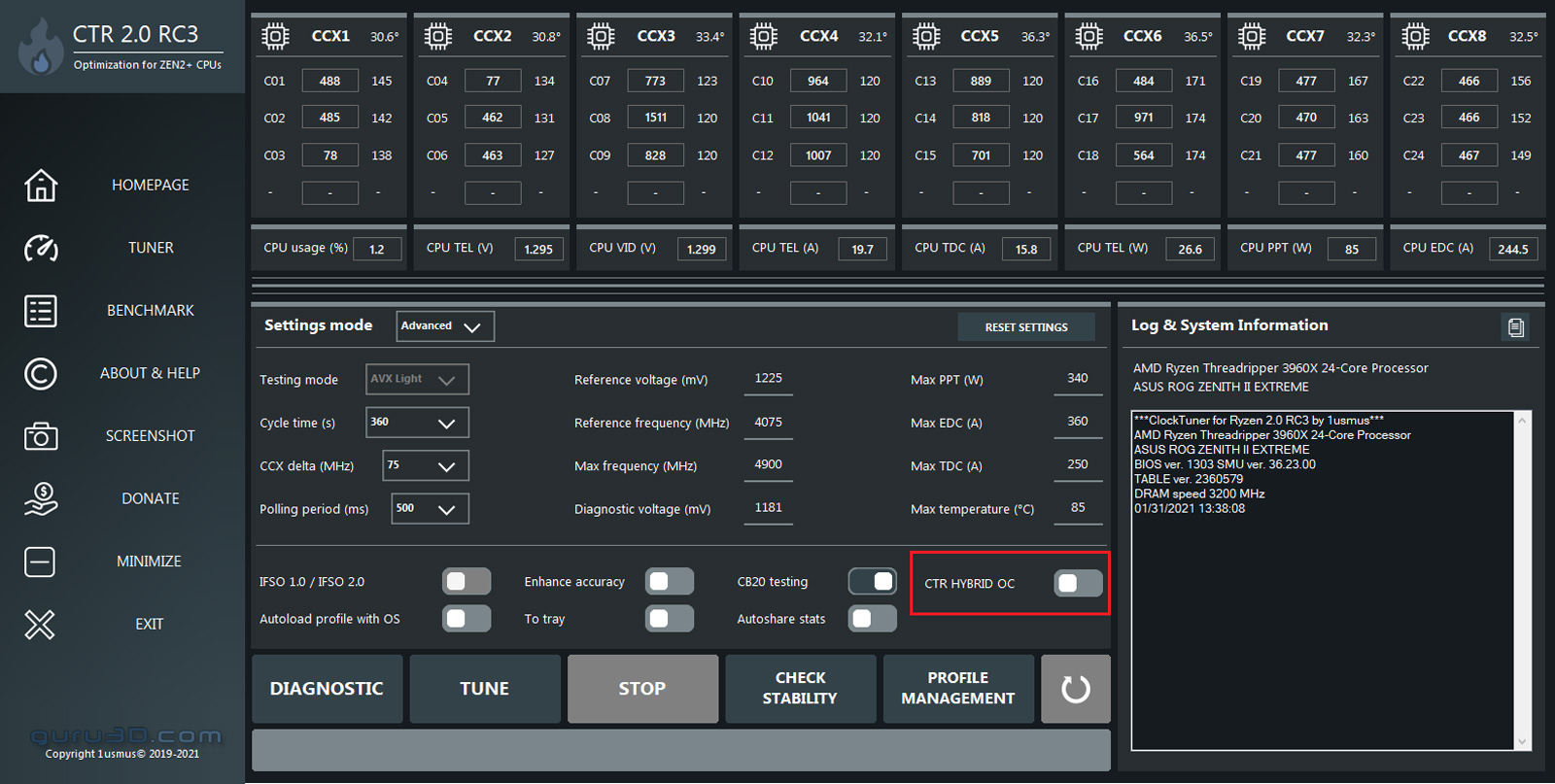
CTR 2.0 is trying to solve this issue with the CTR Hybrid OC feature and bring the best of both worlds. The utility automatically switches the processor’s settings between three different profiles depending on what you are doing. If you’re using multithreaded applications that utilize all CPU cores (i.e. the case where you would benefit from manual OC at a fixed clock speed), the CTR sets the “Profile 1” mode when detecting such a high load on all cores. That mode sets fixed CPU clock speed as with manual overclocking, thus achieving maximum possible MT performance. More precisely, this mode does exactly what the original Clock Tuner for Ryzen did – so the clock speeds are chosen separately for each CCX, it shouldn’t be a single fixed clock for the whole CPU.
However, if you play games, the application switches the processor to the so-called “Profile 2”. This profile is chosen when you have a partial load on one or more CCXs of your processor (4 to 6 threads – not too little, but not too much, otherwise you would jump to Profile 1 for MT loads), which is typical for a gaming load. The goal here is to increase single-thread performance. The frequencies should be static and not respond to temperature or voltage dips or usage of AVX (AVX2). According to the author of the program, Yuri “1usmus” Bubliy, the mode should outperform the stock state of the processor (when only the automatic boost is active) in clock achieved and in performance, but it should not increase power consumption.
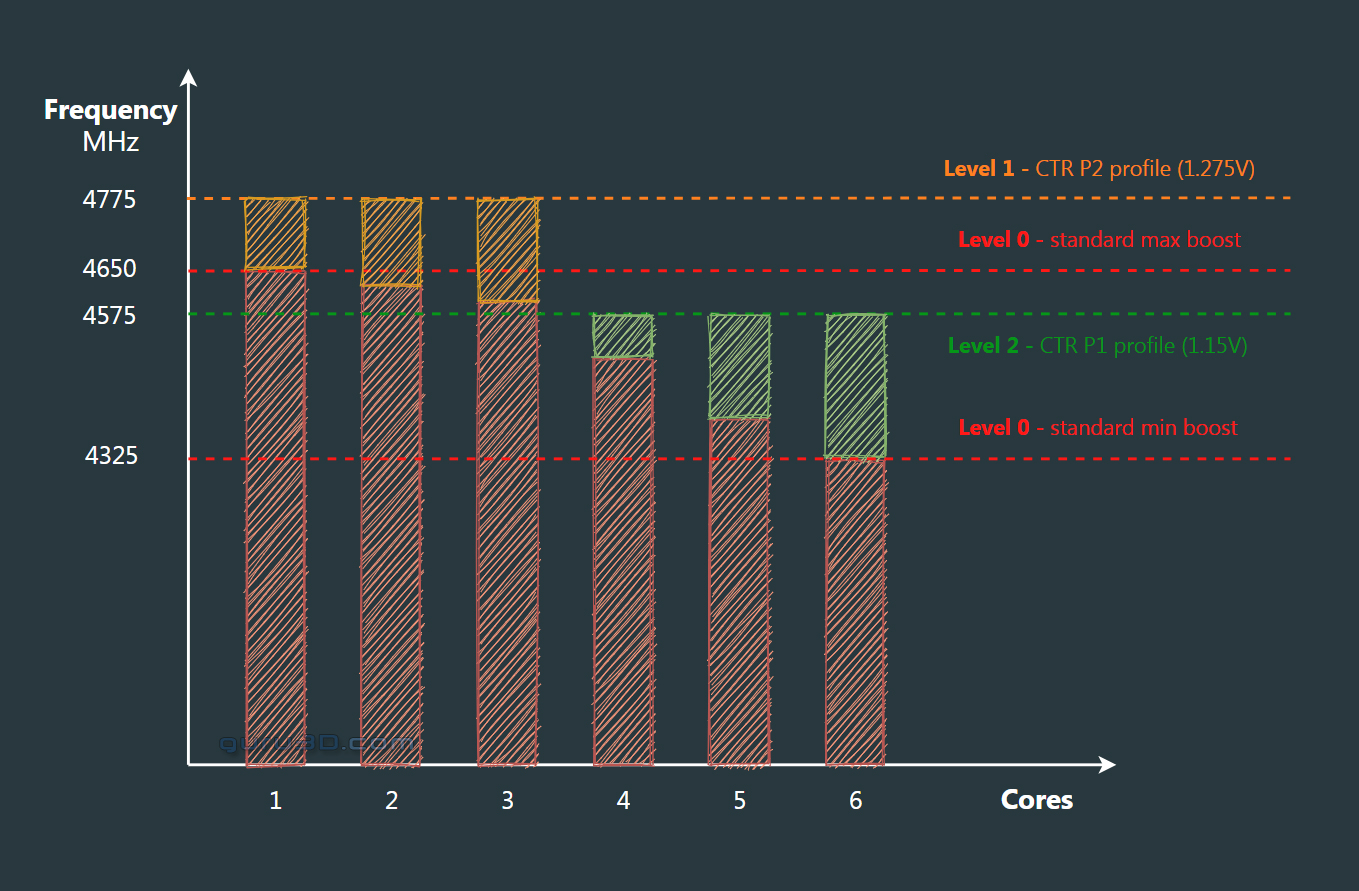
The third mode, “Profile 0”, is what the CTR opts for when the CPU load is lower than criteria for Profile 2. In this mode, the processor appears to switch to stock mode without overclocking and uses only the normal default boost as set by AMD. This ensures that you will have high energy efficiency during light load or inactivity, as well as the highest single-thread performance (provided by the default boost).
You can set the CPU load limits at which the CPU switches from Profile 0 to Profile 2 (or from Profile 2 to Profile 1) yourself via the program, so that the behavior can be adjusted for your own needs. For example, you can set the minimum load for Profile 2 to be zero, in which case only this OC profile will ever be used (and Profile 1 in the maximum MT load), with that the CPU will never be in the non-overclocked Profile 0 mode.
There is a delay when switching between profiles, as too high rate of switching would not be good for performance. This can be customized using the so-called “Holding Time”. The CTR also disables the selection of overclocked profiles (1, 2) in the event of a high temperature, which protects you from overheating the processor when your cooling is insufficient.
Automatic recovery in case of problems
Another new feature is the so-called Phoenix Mode, which should ensure that the program recovers from a system crash or BSOD. During the search for overclocking limits that the program performs during stability testing, it gradually logs the settings in a way that at a moment the system crashes within 90 seconds, it remembers previously stored safe values that were used prior to the incident, and it reverts to those settings – this should be managed without the user having to intervene. Note: what we are talking about is the initial setup of the program when you are discovering/training your OC settings, not about normal PC use.
Clock Tuner for Ryzen 2.0 is now available for download, so you can start experimenting (but remember, this all is still overclocking, so you’re taking some risk and it’s at your own responsibility). In addition to new Ryzen with Zen 3 cores, Zen 2 is still supported, i.e. Ryzen 3000 “Matisse” processors by CTR 2.0, and now also Ryzen 4000G „Renoir“ for desktop AM4 socket is supported.
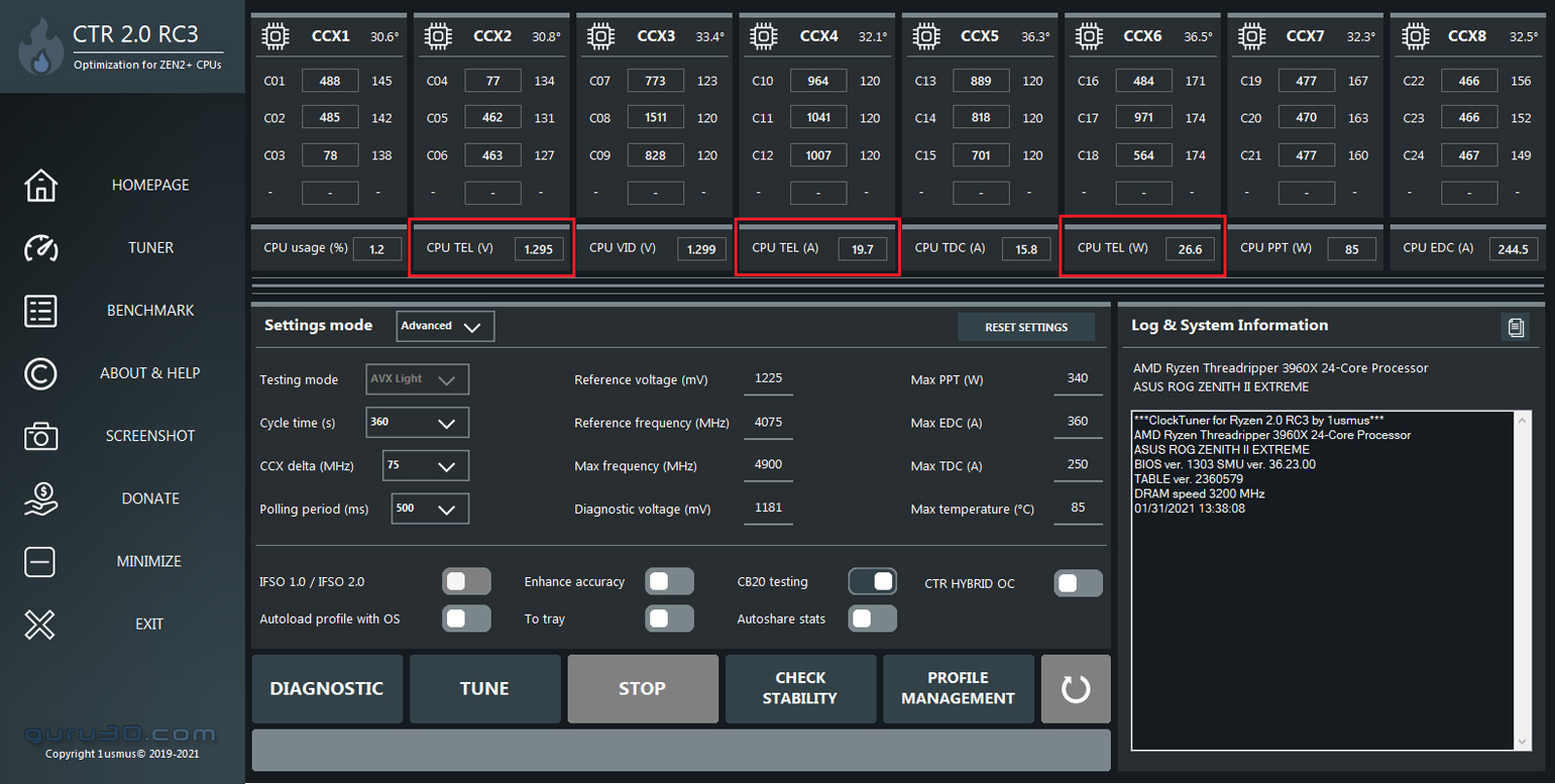
CTR 2.1 will support Curve Optimizer
Other new features are to be added in the upcoming version of ClockTuner for Ryzen 2.1. For example, it is planned to make it able to adjust boost parameters, and this new version should also support the Curve Optimizer feature on Zen 3 (this is a new undervolting method that AMD has introduced for Zen 3, we wrote about it here). It is also said that an alternative method of stability testing/searching for safe OC limits, which would take less time than the current one, is being worked on for future updates.
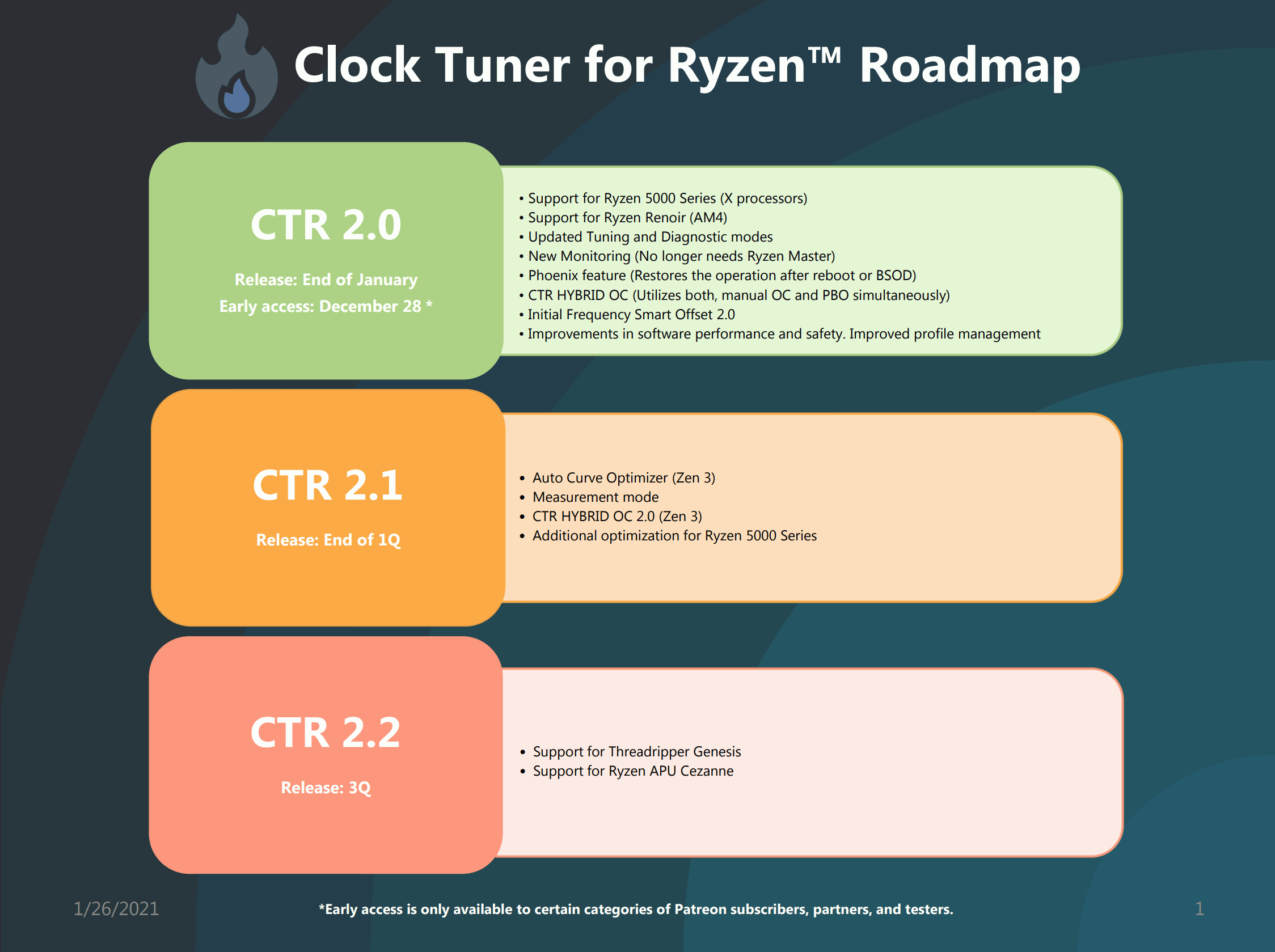
The test build of the 2.1 version is already available to those who contribute to the development through the Patreon service, and will later be released publicly.
If you want to read up on the operation in detail, the author of the program (Yuri “1usmus” Bubliy) described the new features in an article on Guru3D along with examples and instructions for use. His presentation of the program can be read here.
You can download from techPowerUp, Guru3D, or from igor’sLAB sites which officially host the tool.
Translated, original text by: Jan Olšan
- Contents
- The new version of the advanced tool for automatic overclocking of AMD processors brings big changes





